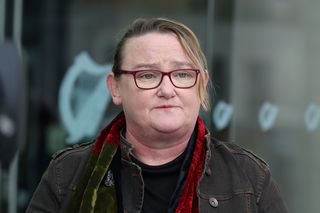Hospital in Savita case makes progress but concerns raised

A REVIEW of the hospital where Savita Halappanavar died found patients notes were "sub-standard" and raised concerns that a number of recommendations would not have been implemented within a reasonable timeframe.
An overall review of the implementation of recommendations following the death of the 31-year-old at Galway University Hospital on October 28, 2012, found the hospital has made significant progress in bringing in the recommendations.
The Ernst & Young review found the hospital group was committed to implementing the recommendations and had an action plan in place. However, it highlights concerns about the ability to deliver some changes within a reasonable timeframe.
It also threw up some negative findings about practices in the hospital. It found that half of the 2,000 policies in place in the hospital were out of date or required revision.
An audit of healthcare records at the maternity unit of the hospital also revealed "sub-standard documentation across all grades of medical staff". The spot check of patient notes was carried out in the maternity wards to assess adherence to current guidelines.
Dr Pat Nash, Clinical Director of the Saolta University Health Care Group said new charts had now been put in place which would allow for clearer documentation.
The review also noted a need to improve the follow-up of blood results group-wide. Dr Nash said a new system is already in place and alarming results were communicated immediately but this would not reach audit stage until early next year.
The EY review also looked at five sepsis cases at the hospital between January and March of this year, stating that while it was an encouraging first audit there was "still room for improvement".
A number of staff involved in the care of Ms Halappanavar remain on sick leave two years after her death.
However, no staff remain on protective leave. Nine of the 30 staff involved in her care received either written warnings or were given more training. None were suspended or dismissed and the review said there were no "residual actions" to be taken.
In total 33 recommendations were made in three separate reviews into Ms Halappanavar's death by the HSE, HIQA and the inquest. The EY review looked at the implementation of the 15 HIQA recommendations.
It found changes had met or exceeded expectations in four areas and work was continuing on a further seven which had partially met expectations and would deliver within a reasonable timeframe.
On four of the recommendations, the reviewers raised concerns about the capacity to meet expectations within a required timeframe. These included the action plan for maternity services, better co-ordination of key performance indicators for the maternity services, clinical governance arrangements and training of staff in managing risk adverse incidents.
The EY report also called for a further review to assess the embeddedness, effectiveness and efficiency of the new arrangements.
In a separate report Dr Nash, found that all of the local recommendations arising from the HSE patient safety review and applicable local recommendations of the Coroner have either been fully implemented or had an implementation plan in place.
Dr Nash said the hospital is in the process of recruiting a bereavement councillor for the maternity unit. He told the board that infrastructural deficits in the maternity department would have to be addressed in time and would require the construction of a new unit.
Join the Irish Independent WhatsApp channel
Stay up to date with all the latest news















